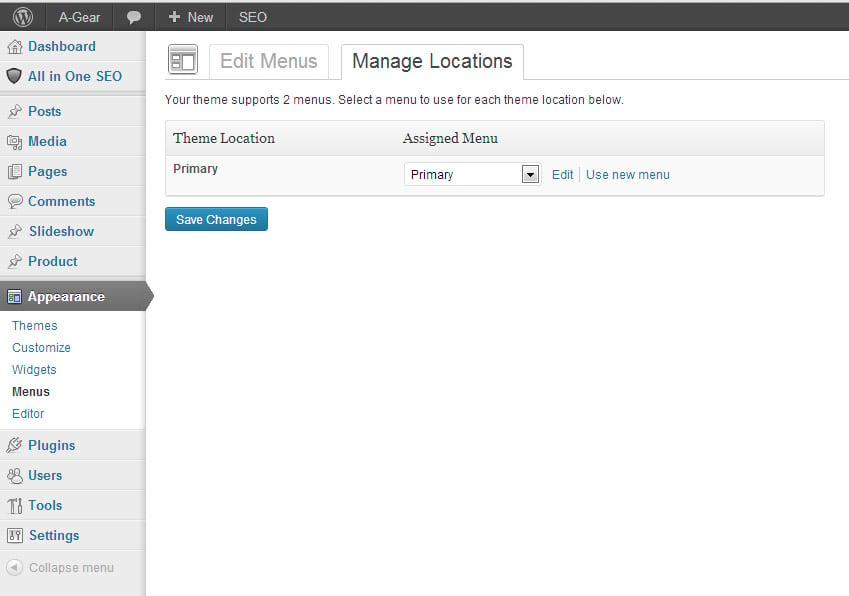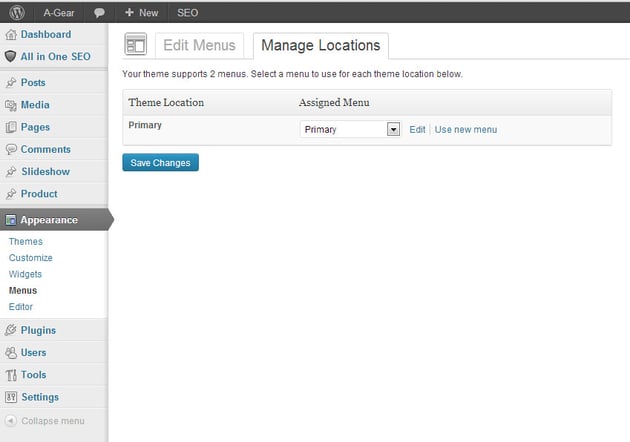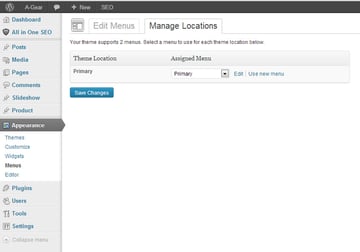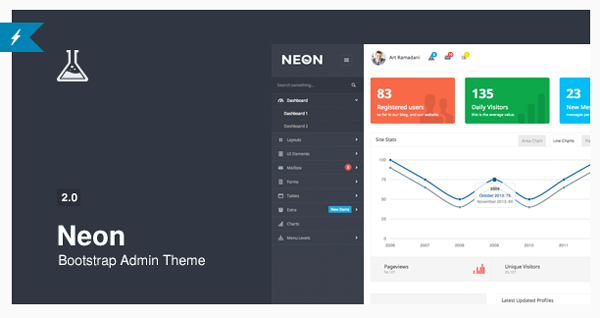您是否曾想加快主题开发过程?我认为答案是“是”,并且您已经了解 bootstrap 并在模型中使用它进行开发。这就提出了一个问题:“如何将 bootstrap 组件集成到 wordpress 主题中?”
本系列教程将介绍如何将最流行的 Bootstrap 组件集成到 WordPress 主题中。让我们从 Navbar 组件开始,它可以轻松创建响应式导航栏。为了使本教程易于理解,我将使用一个仅包含徽标和菜单的导航栏。
以下是 Bootstrap 文档页面的源代码:
<nav class="navbar navbar-default" role="navigation">
<!-- Brand and toggle get grouped for better mobile display -->
<div class="navbar-header">
<button type="button" class="navbar-toggle" data-toggle="collapse" data-target=".navbar-ex1-collapse">
<span class="sr-only">Toggle navigation</span>
<span class="icon-bar"></span>
<span class="icon-bar"></span>
<span class="icon-bar"></span>
</button>
<a class="navbar-brand" href="#">Brand</a>
</div>
<!-- Collect the nav links, forms, and other content for toggling -->
<div class="collapse navbar-collapse navbar-ex1-collapse">
<ul class="nav navbar-nav">
<li class="active"><a href="#">Link</a></li>
<li><a href="#">Link</a></li>
<li class="dropdown"> <a href="#" class="dropdown-toggle" data-toggle="dropdown">Dropdown <b class="caret"></b></a>
<ul class="dropdown-menu">
<li><a href="#">Action</a></li>
<li><a href="#">Another action</a></li>
<li><a href="#">Something else here</a></li>
<li><a href="#">Separated link</a></li>
<li><a href="#">One more separated link</a></li>
</ul>
</li>
</ul>
</div>
</nav>
让我们仔细看看代码并澄清一些事情,以便更好地理解本教程的下一部分。
<nav role="navigation">…</nav>
包装器 - 一个
<div class="navbar-header">…</div>
标题 – 一个
<button class="navbar-toggle" type="button" data-toggle="collapse" data-target=".navbar-ex1-collapse">…</button>
切换按钮 -
<a class="navbar-brand" href="#">Brand</a>
品牌 – 带有徽标的链接;它是可选的,您可以在此处省略它并将其包含在其他地方。
<div class="collapse navbar-collapse navbar-ex1-collapse">…</div>
可折叠内容 - 具有“collapse”类和“navbar-collapse”类的
<ul class="nav navbar-nav">…</ul>
菜单 – 一个
此步骤假设您已安装 WordPress 并且您正在开发的主题已激活。
打开您的 functions.php 文件并注册您的导航(如果尚未注册)。
<?php
/* Theme setup */
add_action( 'after_setup_theme', 'wpt_setup' );
if ( ! function_exists( 'wpt_setup' ) ):
function wpt_setup() {
register_nav_menu( 'primary', __( 'Primary navigation', 'wptuts' ) );
} endif;
?>
注册引导文件和 jQuery:
function wpt_register_js() {
wp_register_script('jquery.bootstrap.min', get_template_directory_uri() . '/js/bootstrap.min.js', 'jquery');
wp_enqueue_script('jquery.bootstrap.min');
}
add_action( 'init', 'wpt_register_js' );
function wpt_register_css() {
wp_register_style( 'bootstrap.min', get_template_directory_uri() . '/css/bootstrap.min.css' );
wp_enqueue_style( 'bootstrap.min' );
}
add_action( 'wp_enqueue_scripts', 'wpt_register_css' );
从 GitHub 下载 Edward McIntyre 的 wp-bootstrap-navwalker 类。将文件放入主题根文件夹中。返回到您的 functions.php 并粘贴以下代码:
<?php // Register custom navigation walker
require_once('wp_bootstrap_navwalker.php');
?>
导航到您的 WordPress 网站后端Appearance->Menu。创建一个名为“Primary”的新菜单并向其中添加项目。转到管理位置选项卡,并为名为“主要”的主题位置指定菜单“主要”。保存更改。



打开您的 header.php 并将导航栏模型复制并粘贴到您希望其显示的位置。现在我们用 WordPress 的模板功能替换部分模型。首先放置徽标的正确链接。更改此行:
<a class="navbar-brand" href="#">Brand</a>
至:
<a class="navbar-brand" href="<?php bloginfo('url')?>"><?php bloginfo('name')?></a>
下一步是从后端输出菜单而不是模型菜单。对于这些行:
<ul class="nav navbar-nav"> <li class="active"><a href="#">Link</a></li> <li><a href="#">Link</a></li> <li class="dropdown"> <a href="#" class="dropdown-toggle" data-toggle="dropdown">Dropdown <b class="caret"></b></a> <ul class="dropdown-menu"> <li><a href="#">Action</a></li> <li><a href="#">Another action</a></li> <li><a href="#">Something else here</a></li> <li><a href="#">Separated link</a></li> <li><a href="#">One more separated link</a></li> </ul> </li> </ul>
与:
<?php /* Primary navigation */ wp_nav_menu( array( 'menu' => 'top_menu', 'depth' => 2, 'container' => false, 'menu_class' => 'nav', //Process nav menu using our custom nav walker 'walker' => new wp_bootstrap_navwalker()) ); ?>
现在您已将引导导航栏组件集成到您的主题中。
在本教程中,我们研究了如何将使用 Bootstrap CSS 框架创建的导航栏集成到 WordPress 主题中。要加快主题开发速度,您只需下载源文件并将其粘贴到您的主题中即可。
您还可以在 Envato Market 上找到一些很棒的 Bootstrap 主题和模板,例如 Neon Bootstrap 管理模板或 Selphy Electronics 电子商务 Boostrap 模板。

以上就是如何将Bootstrap导航栏集成到WordPress主题中的详细内容,更多请关注php中文网其它相关文章!

全网最新最细最实用WPS零基础入门到精通全套教程!带你真正掌握WPS办公! 内含Excel基础操作、函数设计、数据透视表等

Copyright 2014-2025 //m.sbmmt.com/ All Rights Reserved | php.cn | 湘ICP备2023035733号